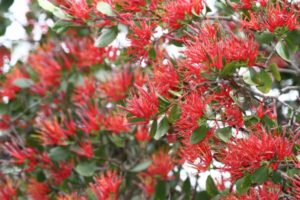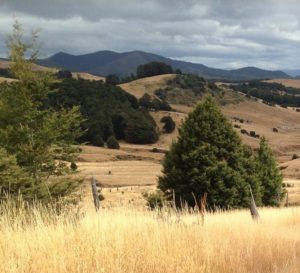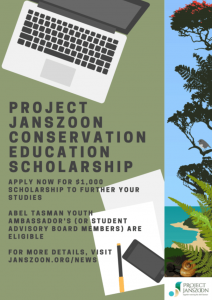
On Thursday 25 November, 21 pāteke /brown teal were released at the Anchorage Wetlands, bringing the number of New Zealand’s rarest duck released into the park to 358, and celebrating a successful re-introduction project.
The young birds were bred through the Brown Teal Recovery Program and were flown up from The Isaac Conservation and Wildlife Trust (thanks Air New Zealand), transported into the park by Abel Tasman Sea Shuttle, and released into their new home at Anchorage Wetland with the help of Department of Conservation. Previously pāteke have only been released at Awaroa and Totaranui.
This is expected to be the last release of pāteke into the Abel Tasman, with the species recovery in the park a great result from the hard work of many groups and individuals to keep predators under control.
Project Janszoon Director Aneika Young of Ngāti Rārua and Te Ātiawa descent, opened the release with a karakia and sent the birds on their way with karanga. Along with volunteers from Mārahau Halo and Otuwhero Trust, Abel Tasman Youth Ambassadors from Motueka High School were on hand to help with carrying the birds to the release site, which is within their ‘adopt a section’ site’ so they will be kaitiaki for these birds, along with iwi.
The Abel Tasman Birdsong Trust, which plays a key role in controlling predators in the park, came along to help with the release.
Project Janszoon Director Bruce Vander Lee said that the successful re-establishment of pāteke in the Abel Tasman shows what can be achieved when agencies, businesses, community groups, and volunteers work together to take on a conservation challenge.
“Protecting released pāteke by controlling predators has been key,” says Bruce. “Project Janszoon has been fortunate to work with Abel Tasman Birdsong Trust, Air New Zealand, and DOC to control predators inside the park, and with amazing community groups like Marahau Halo and Takaka Hill Biodiversity Group on the fringes of the park. We’ve been thrilled to see pāteke expanding their range both inside and outside the park due to these efforts.”
DOC Biodiversity Ranger Jim Livingstone says that pāteke are now fairly frequently seen on wetland sites and inlet fringes in the park.
“We released these last birds at the Anchorage Wetland, which offers very good habitat. A small number of manu had flown from Awaroa Inlet and were already in residence.
“The release at this site provides manu with a secure place, with plentiful food, and enables them to adapt well to the wild. Perhaps more importantly, it forms another hub of manu that can multiply and progressively disperse to neighbouring wetland and coastal areas within our district.”
According to Pāteke Recovery Group captive breeding and reintroduction coordinator Kevin Evans, pāteke are breeding well in the Abel Tasman.
“Unbanded ducks are now being seen with their own ducklings – so we know that the original banded birds have bred and their young are breeding too. They are still very susceptible to predation by stoats and feral cats in particular, so for them to survive long term we have to keep the pest control pressure on.”
Once the most populous waterfowl on New Zealand’s mainland, pāteke are now our rarest duck species. Their demise from a commonly seen water fowl was due to feral cats, stoats and ferrets which found them easy prey. The only other South Island population is in the Arthur Valley in Fiordland,
The juvenile ducks released into the park were bred by volunteers at 14 captive breeding facilities around New Zealand and spent time at the Isaac Conservation and Wildlife Trust facility in Christchurch for pre-release conditioning. The captive breeding programme has helped the pāteke move from Endangered to At Risk conservation status – today there are about 2000-2500 birds in the wild.
Due to Covid-19 restrictions the pāteke were flown to Nelson Airport where they were welcomed by Archdeacon Harvey Ruru and Kaitiaki Barney Thomas before being transported by shuttle bus and Abel Tasman Sea Shuttles to the release site.
Thanks for this effort must go to:
Abel Tasman Birdsong Trust, Brown Teal Recovery, Department of Conservation, Air New Zealand, Abel Tasman Sea Shuttles, Motueka High School Abel Tasman Youth Ambassadors.



